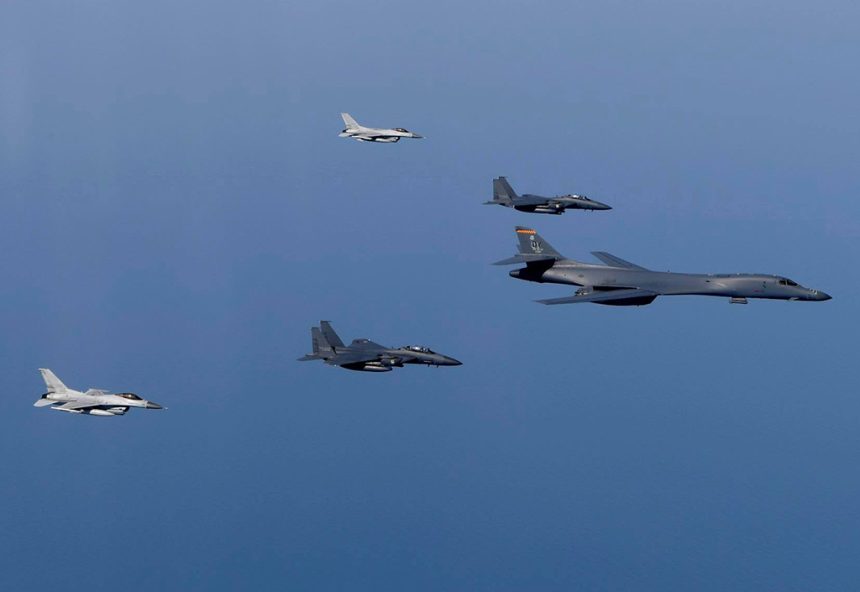A B-1 Lancer performing a mock attack on a range in South Korea amid raising tensions with North Korea caused the China’s Air Defense to radio a warning message as the bomber flew close to the Chinese airspace.
On Mar. 22, hours after the latest (failed) missile test by Pyongyang, a U.S. Air Force B-1 “Lancer” deployed to Guam flew a simulated attack run on the U.S. Force Korea’s bombing range on the island of Jikdo in the West Sea.
During part of the sortie the American heavy bomber was escorted by two South Korea’s F-15K and two KF-16 fighter jets as shown in the photo posted above.
Noteworthy, along with sending a deterrence message to North Korea amid raising tensions caused by the latest ballistic missile launches, the B-1 bomber caused some concern to the Chinese military that tracked the American as it flew over the East China Sea in bound to the Korean peninsula: Fox News reported that the “Bone” bomber (as the B-1 is dubbed by its aircrews) was issued a radio warning on the Guard Channel (the international U/VHF emergency frequency) because it was flying inside Chinese airspace according to the Chinese.
However, U.S. officials who spoke to Fox News said that the bomber was flying in international airspace 70 miles southwest of the South Korean island of Jeju.
Such incidents are not infrequent in that region.
U.S. B-52 and B-2 bombers routinely fly nuclear deterrence missions in the Asia-Pacific theater from both CONUS bases and Andersen Air Force Base in Guam. In November 2013, a flight of two U.S. B-52 bombers departed from Guam airbase entered the new Air Defense Identification Zone (ADIZ) over East China Sea close to the disputed islands without complying with any of the rules set by Beijing for the ADIZ. In that case, the mission intentionally skirted the disputed Diaoyu Islands (known as Senkaku islands in Japan).
Image credit: ROKAF















